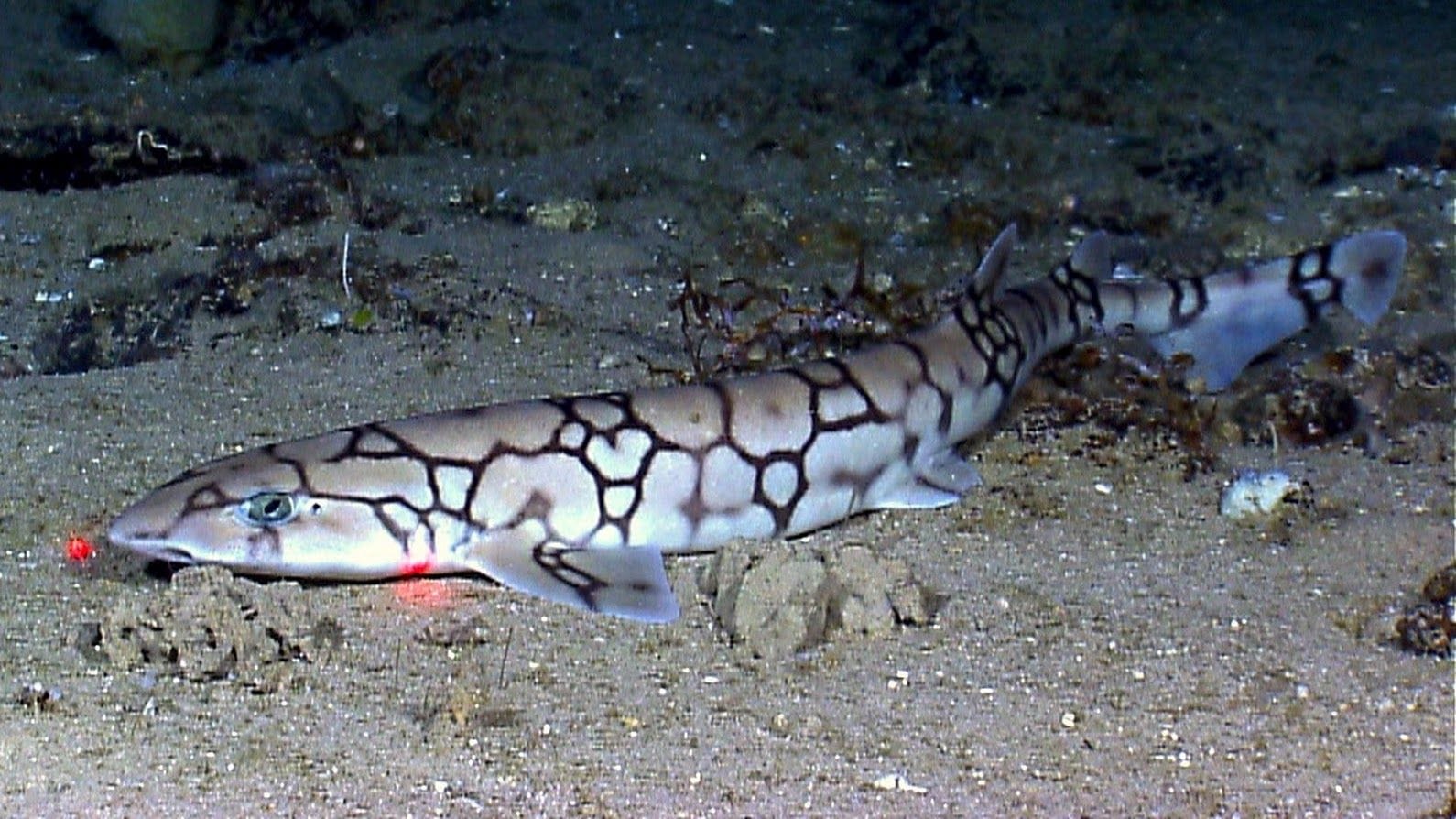Dive into the enigmatic world of chain catsharks, masters of disguise who illuminate the ocean depths with an ethereal green glow. These elusive creatures, adorned with intricate chain-like markings, captivate scientists and ocean enthusiasts alike. Join us as we unravel the secrets of their bioluminescence, explore their deep-sea domain, and delve into the fascinating adaptations that allow them to thrive in a world of darkness.
A Shimmering Spectacle: Unveiling the Chain Catshark
Imagine a shark cloaked in darkness, its skin embellished with an intricate pattern resembling delicate chains, faintly glowing with an otherworldly light. This is the captivating allure of the chain catshark ( Scyliorhinus retifer).
A Glimpse into the Depths
Chain catsharks, also known as chain dogfish, are small, slender sharks inhabiting the western Atlantic Ocean. Their range extends from the depths off George’s Bank, Massachusetts, down to the waters surrounding Nicaragua and Barbados in the Caribbean. They are most commonly found at depths ranging from 36 to 750 meters (118–2,461 feet), with northern populations generally preferring shallower waters than their southern counterparts.
These elusive sharks prefer the cool, dark embrace of the deep, favoring rough, rocky bottoms adorned with boulders, crevices, and even the protective tubes of cerianthid anemones. These structures provide essential camouflage and shelter in a world where survival depends on blending in and outmaneuvering both predator and prey.
A Symphony of Light in the Abyss
One of the most remarkable features of chain catsharks is their ability to bioluminesce – to produce and emit their own light. This mesmerizing spectacle is made possible by specialized cells called photophores, which are scattered across their skin. Within these photophores, a chemical reaction involving the enzyme luciferase and the substrate luciferin takes place, resulting in the emission of a captivating green light.
But this isn’t just a random light show. Research suggests that chain catsharks can exert precise control over their luminescence, adjusting the intensity and duration of their glow. They can even produce unique patterns of light on their dorsal (upper) and ventral (under) surfaces, hinting at a complex system of communication and camouflage.
The Elusive Hunters: Diet and Adaptations
Chain catsharks are primarily nocturnal hunters, spending their days resting on the ocean floor, conserving energy for their nighttime forays. While scientists are still unraveling the intricacies of their hunting strategies, their diet provides valuable clues.
A Taste of the Deep
These opportunistic carnivores have a diverse menu, primarily consisting of small invertebrates and fish that inhabit the seafloor. Crustaceans, including crabs and lobsters, are a staple food source, along with squid, cephalopods, and even polychaete worms. Interestingly, a chain catshark’s diet appears to shift as it grows. Juveniles primarily consume crustaceans and worms, while adults, perhaps with a more developed palate, seem to favor fish.
Navigating a World of Darkness
Their preferred hunting grounds, shrouded in perpetual darkness, pose unique challenges. However, chain catsharks have evolved a suite of remarkable adaptations that allow them to thrive in this extreme environment.
- Keen Sense of Smell: In the absence of sunlight, their highly developed olfactory system plays a crucial role in locating prey.
- Electroreception: Like many sharks, they possess ampullae of Lorenzini, specialized organs that detect the faint electrical fields generated by the muscle contractions of their prey.
- Ambush Predators: Their coloration and ability to remain motionless on the seafloor make them masters of disguise, allowing them to ambush unsuspecting prey.
The Circle of Life in the Deep
Chain catsharks are oviparous, meaning they reproduce by laying eggs. Females lay distinctive egg cases, often referred to as “mermaid’s purses,” which are rectangular in shape and equipped with long tendrils. These tendrils serve a vital purpose, allowing the female to securely attach the egg cases to rocks, corals, or other structures on the seafloor. This strategy provides a safe haven for the developing embryos, protecting them from predators and ensuring a stable environment for their growth.
Mysteries Yet to Be Solved
While scientists have made significant strides in understanding these enigmatic creatures, many questions remain unanswered.
- The Language of Light: What messages are conveyed through their bioluminescent displays? Are they used to attract mates, signal to rivals, or confuse predators?
- The Depths of Their Domain: What are the full implications of their depth preferences and habitat choices?
- The Impact of a Changing Ocean: How will climate change and other anthropogenic factors affect their deep-sea environment and, ultimately, their survival?
Guardians of the Abyss: A Future Uncertain
Currently classified as Least Concern by the International Union for Conservation of Nature (IUCN), chain catsharks do not face significant threats from fishing pressure. However, their deep-sea habitat makes them particularly vulnerable to the impacts of habitat degradation, pollution, and climate change, all of which have the potential to disrupt the delicate balance of these fragile ecosystems.
By unraveling the mysteries of chain catsharks and their remarkable adaptations, we gain a deeper appreciation for the wonders of the deep sea and the importance of protecting these still largely unexplored realms.















